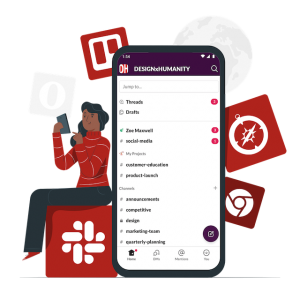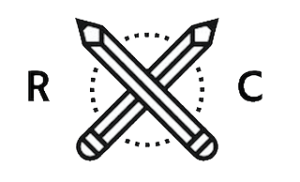Scrum for Designers

Graphic by Stephanie Fleming
Executive Summary:
I developed a series of E-Learning Micro-Courses to meet the needs of artists working at an instructional design collective. Responding to a need for more customized training on how Scrum was being deployed within an asychronous environment, I created scenario-based interactions with graphics reflecting the diversity of the audience.
Challenge:
DESIGNxHUMANITY is a nonprofit design collective which creates anti-racist and social-justice oriented E-Learning materials for schools and other community organizations. They have grown rapidly and have a large pool of freelance and volunteer instructional designers, graphic designers, and subject matter experts working together asynchronously on Scrum teams. 75% of participants were new to Agile and to the Scrum framework. Teams were provided with links to training materials and with a quick video tutorial produced in house, but they reported that they found the trainings confusing and that they had difficulty prioritizing backlog items and working cross-functionally. Using Scrum in asynchronous environment was also causing problems because teams were unsure about how to conduct their daily standups and how to organize their team backlogs. Participants also reported being unhappy with the visuals used in the original training because BIPOC characters were not well-represented.

Graphic by Freepik
Solution Criterion:
To address this challenge effectively, I needed to create a series of courses which would give learners an overview of the Scrum process as it was being used at DxH. All training would need to be web-based and shareable via slack. Since many of the audience members were volunteers, I would need to limit the time commitment required to complete the training.
Selected Criterion
To address these challenges, I created an E-Learning course in Articulate which to give learners an overview of the Scrum philosophy and then guide them through each step of the Scrum Cycle as it was used at DxH. For the final assessment I used a simulation framework to walk learners through the Scrum cycle of a fictional team and asked them to select the best option for a set of scenarios a typical team in their organization might face, such as having members in different time zones.
Design and Development Process:
I collaborated with two Scrum-certified subject matter experts at the organization in order to identify the most significant needs of the teams and used an SAM framework to develop initial prototypes of my script and storyboard, which were then revised based on the feedback of the SMEs. After getting sign off on the storyboard I developed an MVP version of the course in Storyline and had a small group of users give feedback. This feedback helped me create the current iteration of the course.
Challenges:
Accessibility and ADA compliance were major concerns for this project. In keeping with the vision and mission of the organization, it was critical that this course be screen-reader accessible and use an equal balance of audio, text, and imagery. I went through a special round of QA to ensure that the course would meet accessibility requirements, but the process ultimately made me more thoughtful about my UX choices and taught me some new Articulate tricks I could deploy to make sure that my courses are accessible to all learners. Another challenge was sourcing graphics which would accurately represent my audience. In order to do this, I curated images from the Freepik platform and worked with volunteer graphic designer Stephanie Fleming to create original artwork.
Evaluation:
Before taking the course, learners will complete a behavioral survey designed to capture their current performance level on their Scrum teams. Learners will be given the same evaluation a month after taking the course so that KPIs can be measured.
